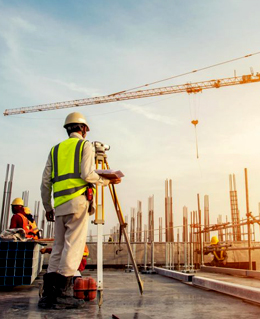Industry Sectors


INDUSTRIES
What does a healthy environment look like in your industry?
The same fundamental Healthy Environments approach applies to all sectors of industry and commerce but each industry has slightly different requirements.
So, we start here…
Engineer spaces to improve air quality and surface cleanliness
Improve the health of the environment with toxin-free disinfectants
Limit the spread of pathogens and disease with additional measures
…and adapt each protocol to your specific requirements.
Click on your industry and see how the Healthy Environment system works to keep your people safe and healthy.

Retail and shopping malls
Retail environments such as shopping malls have some unique challenges when it comes to preventing the spread of infectious diseases and maintaining safe and healthy environments for employees and shoppers.
Visitor numbers can be unpredictable and vary greatly. Germs can be spread easily through airborne means, direct contact (hands) and contaminated surfaces in food courts, rest rooms, info counters and other high-traffic public spaces.
Surfaces that can become easily contaminated include chairs and benches, elevator buttons, escalator rails, changing rooms, debit machines, counters, vending machines, shopping cart handles, etc.
We turn retail environments and shopping malls into healthy and safe environments by
- Widespread ATP testing and air quality testing to establish present hygiene levels
- Creating the necessary cleaning protocols and infection control systems based on test results
- Introducing measures to maintain clean surfaces using long-lasting, non-toxic disinfectants
- Introducing measures to maintain clean air
- Using microfiber cloths to reduce bacteria and cross-contamination
- Providing hand-sanitising options for employees and visitors
- Displaying signage to increase awareness of the measures
- Conducting temperature checks on visitors at access points to prevent infectious diseases being introduced to the environment
- Introducing crowd control measures to limit the numbers of people in the shop/mall
- Maintaining a healthy environment with regular testing of surfaces and air quality, and cleaning protocol reviews
- Using bacteria-based floor cleaning products to reduce slips and trips and waste costs
Hospitals and health care
It’s well-documented just how many people suffer from unnecessary infections in hospitals: around one in 20 patients will suffer from a healthcare associated infection (HAI).
Health care facilities, therefore, require additional stringent measures to main a sanitary environment.
Patients and visitors are at their most vulnerable in a hospital and must be protected from harmful bacteria, viruses and other germs.
Germs can be spread through airborne means, direct contact (hands) and contaminated surfaces, as well as in the food and water and through clothing and furnishing.

We help to turn hospitals and healthcare facilities into healthy and safe environments by
- Widespread ATP testing and air quality testing to establish present hygiene levels
- Creating the necessary cleaning protocols and infection control systems based on test results
- Introducing measures to maintain clean surfaces using long-lasting, non-toxic disinfectants
- Introducing measures to maintain clean air
- Using microfiber cloths to reduce bacteria and cross-contamination
- Introducing improved hand-sanitising measures for staff and visitors
- Introducing antimicrobial laundry practices for uniforms to protect patients and employees
- Displaying signage to increase awareness of the measures
- If necessary, conducting temperature checks on staff and visitors at access points to prevent infectious diseases being introduced to the environment
- Limiting visitor numbers
- Maintaining a healthy environment with regular testing of surfaces and air quality, and cleaning protocol reviews

Aged care
We saw during Covid-19 how aged care homes are amongst the most vulnerable places during an infectious disease outbreak.
Additional care must be taken with cleaning protocols as many residents have underlying health conditions, such as COPD, asthma, and other diseases.
In aged care facilities, germs can be spread through airborne means, direct contact (hands) and contaminated surfaces, as well as in the food and water.
Surfaces that can become easily contaminated include chairs, counters, TVs, doorknobs, lift controls, check-in desks, exam tables, trays, equipment, bedrails, help buttons, curtains, etc.
We help to turn aged care facilities into healthy and safe environments by
- Widespread ATP testing and air quality testing to establish present hygiene levels
- Creating the necessary cleaning protocols and infection control systems based on test results
- Introducing measures to maintain clean surfaces using long-lasting, non-toxic disinfectants
- Introducing measures to maintain clean air
- Using microfiber cloths to reduce bacteria and cross-contamination
- Introducing improved hand-sanitising measures for staff, residents, and visitors
- Introducing antimicrobial laundry practices for uniforms to protect residents and employees
- Displaying signage to increase awareness of the measures
- Conducting regular temperature checks on staff and visitors at access points to prevent infectious diseases being introduced to the environment
- Limiting visitor numbers
- Maintaining a healthy environment with regular testing of surfaces and air quality, and cleaning protocol reviews
Commercial buildings
In commercial buildings, germs can be spread through airborne means, direct contact (hands) and contaminated surfaces.
Surfaces that can become easily contaminated include couches, chairs, elevator buttons, courtesy phones, security desk equipment, doorknobs, desks, computers, kitchen areas, waiting areas, toilets, vending machines, etc.
Many commercial buildings also suffer from dry environments that are perfect for airborne viral transmission and contagion.
Additionally, poor air filters, inadequate ventilation, and inadequate sanitising measures and cleaning protocols heighten the risks.

We turn commercial buildings into healthy and safe environments by
- Widespread ATP testing and air quality testing to establish present hygiene levels
- Creating the necessary cleaning protocols and infection control systems based on test results
- Introducing measures to maintain clean surfaces using long-lasting, non-toxic disinfectants
- Introducing measures to maintain clean air
- Using microfiber cloths to reduce bacteria and cross-contamination
- Introducing improved hand-sanitising measures for employees and visitors
- Displaying signage to increase awareness of the measures
- Conducting temperature checking on employees and visitors at access points to prevent infectious diseases being introduced to the environment
- Limiting visitor numbers
- Maintaining a healthy environment with regular testing of surfaces and air quality, and cleaning protocol reviews

Construction sites
Tradesmen and suppliers access construction sites every day, increasing the chance of spreading infection through airborne means, direct contact (hands) and contaminated surfaces.
A single outbreak can cause the closure of a work site and considerable delays to projects.
Surfaces that can become easily contaminated on a construction site include work equipment, tool handles, clocking-in equipment, clothing, rest rooms, dressing rooms, break areas, kitchen facilities, meeting rooms, etc.
Inadequate ventilation and cleaning protocols heighten the risks, along with a lack of wash basins on some work sites.
We turn commercial buildings into safe and healthy environments by
- Widespread ATP testing and air quality testing to establish present hygiene levels
- Creating the necessary cleaning protocols and infection control systems based on test results
- Introducing measures to maintain clean surfaces using long-lasting, non-toxic disinfectants
- Introducing measures to maintain clean air
- Using microfiber cloths to reduce bacteria and cross-contamination
- Introducing improved hand-sanitising measures for employees and visitors
- Displaying signage to increase awareness of the measures
- Conducting temperature checking on employees and visitors at access points to prevent infectious diseases being introduced to the environment
- Limiting visitor numbers
- Maintaining a healthy environment with regular testing of surfaces and air quality, and cleaning protocol reviews
Government offices
Government departments often have large numbers of employees and members of the public interacting with each other.
Germs can be spread through airborne means, direct contact (hands) and contaminated surfaces.
Surfaces that can become easily contaminated include couches, chairs, elevator buttons, courtesy phones, security desk equipment, doorknobs, desks, computers, kitchen areas, waiting areas, toilets, vending machines, etc.
Poor air filters, inadequate ventilation, and inadequate sanitising measures and cleaning protocols heighten the risks.

We turn government offices and departments into healthy and safe environments by
- Widespread ATP testing and air quality testing to establish present hygiene levels
- Creating the necessary cleaning protocols and infection control systems based on test results
- Introducing measures to maintain clean surfaces using long-lasting, non-toxic disinfectants
- Introducing measures to maintain clean air (Sanders air filters)
- Using microfiber cloths to reduce bacteria and cross-contamination
- Introducing improved hand-sanitising measures for staff and visitors
- Displaying signage to increase awareness of the measures
- Conducting temperature checking on employees and visitors at access points to prevent infectious diseases being introduced to the environment
- Limiting visitor numbers
- Maintaining a healthy environment with regular testing of surfaces and air quality, and cleaning protocol reviews

Educational institutions
Schools and other educational institutions are key places for passing on germs within our communities – through airborne means, direct contact (hands)and contaminated surfaces, as well as in the food and water.
Special areas of focus include tables and chairs in classrooms, doorknobs, changing rooms, toilets, and cafeteria vending machines, as well as shared equipment in music rooms, computer rooms, gymnasiums, and sports etc.
Many schools suffer from dry environments that are perfect for airborne viral transmission and contagion. Additionally, poor air filters, inadequate ventilation, inadequate sanitising, and inadequate cleaning protocols heighten the risks.
Healthy and safe educational environments are essential to the whole community.
We achieve this by:
- Widespread ATP testing and air quality testing to establish present hygiene levels
- Creating the necessary cleaning protocols and infection control systems based on test results
- Introducing measures to maintain clean surfaces using long-lasting, non-toxic disinfectants
- Introducing measures to maintain clean air
- Using microfiber cloths to reduce bacteria and cross-contamination
- Introducing improved hand-sanitising measures for pupils, staff, and visitors
- Displaying signage to increase awareness of the measures
- Conducting temperature checks on pupils, staff, and visitors (if necessary) to prevent infectious diseases being introduced to the environment
- Maintaining a healthy environment with regular testing of surfaces and air quality, and cleaning protocol reviews
Food manufacturing companies
Food manufacturing facilities have always required the highest-grade cleaning and sanitation protocols simply to meet health and safety requirements.
Since Covid-19, the bar has been raised further as employees have heightened concerns over their own safety and protection from infectious diseases.
Germs can be spread through airborne means, direct contact (hands) and contaminated surfaces – and this can affect your people as well as your products and your reputation.

We turn food manufacturing environments into healthy and safe environments by
- Widespread ATP testing and air quality testing to establish present hygiene levels
- Creating the necessary cleaning protocols and infection control systems based on test results
- Introducing measures to maintain clean surfaces using long-lasting, non-toxic disinfectants
- Introducing measures to maintain clean air
- Using microfiber cloths to reduce bacteria and cross-contamination
- Introducing improved hand-sanitising measures for employees and visitors
- Displaying signage to increase awareness of the measures
- Conducting temperature checks on employees and visitors at access points (if necessary) to prevent infectious diseases being introduced to the environment
- Using bacteria-based floor cleaning products to reduce slips and trips and waste costs
- Maintaining a healthy environment with regular testing of surfaces and air quality, and cleaning protocol reviews

Gyms and fitness centres
Gyms and fitness centres are facilities where the threat of catching an infectious disease from contaminated surfaces is high.
Germs can also be spread through airborne means and direct contact (hands).
Surfaces that can become easily contaminated include all gym equipment, shower areas, benches, chairs, lockers, doorknobs, etc.
We turn gyms and fitness centres into healthy and safe environments by
- Widespread ATP testing and air quality testing to establish present hygiene levels
- Air quality testing to establish air cleanliness level
- Creating the necessary cleaning protocols and infection control systems based on test results
- Introducing measures to maintain clean surfaces using long-lasting, non-toxic disinfectants
- Introducing measures to maintain clean air
- Using microfiber cloths to reduce bacteria and cross-contamination
- Introducing improved hand-sanitising measures for employees and customers
- Displaying signage to increase awareness of the measures
- Conducting temperature checks on employees and visitors at access points (if necessary) to prevent infectious diseases being introduced to the environment
- Maintaining a healthy environment with regular testing of surfaces and air quality, and cleaning protocol reviews
Public transport
Public transport poses some unique challenges for public health and safety.
With large numbers of people unavoidably in close proximity to each other, it’s easy for germs to spread through direct contact (hands) and contaminated surfaces.
Special areas of focus include seats, volume and air controls, trays, seat belts; arm rests, handrails, doors, overhead storage, counters, security check facilities, washrooms, etc.
Airborne pathogens are also a threat in the enclosed spaces of airplanes, buses, trains, etc.

We turn public transport into healthy environments by
- Widespread ATP testing and air quality testing to establish present hygiene levels
- Creating the necessary cleaning protocols and infection control systems based on test results
- Introducing measures to maintain clean surfaces using long-lasting, non-toxic disinfectants
- Introducing measures to maintain clean air (Sanders air filters)
- Using microfiber cloths to reduce bacteria and cross-contamination
- Introducing hand-sanitising options for travellers and employees
- Prominently displaying signage to increase awareness of the measures
- If necessary, conducting temperature checks on travellers at entry points to prevent infectious diseases being introduced to the environment
- Maintaining a healthy environment with regular testing of surfaces and air quality, and cleaning protocol reviews

Tourism (large hotels)
Travellers frequently staying in hotels are subjected to a large variety of allergens and pathogens (mould, fungus, bacteria, viruses, etc.)
The threat may be worsened by present cleaning protocols that use toxic chemicals like bleach. Many people suffer from allergies, which are exacerbated by traditional cleaning products and poor air quality .
Plus, germs can be spread through airborne means, direct contact (hands) and contaminated surfaces, as well as in the food and water.
We turn large hotels into healthy environments by
- Widespread ATP testing and air quality testing to establish present hygiene levels
- Creating the necessary cleaning protocols and infection control systems based on test results
- Introducing measures to maintain clean surfaces using long-lasting, non-toxic disinfectants
- Introducing measures to maintain clean air
- Using microfiber cloths to reduce bacteria and cross-contamination
- Introducing improved hand-sanitizing measures for employees and guests
- Displaying signage to increase awareness of the measures
- If necessary, conducting temperature checks on employees and guests at access points to prevent infectious diseases being introduced to the environment
- Maintaining a healthy environment with regular testing of surfaces and air quality, and cleaning protocol reviews
